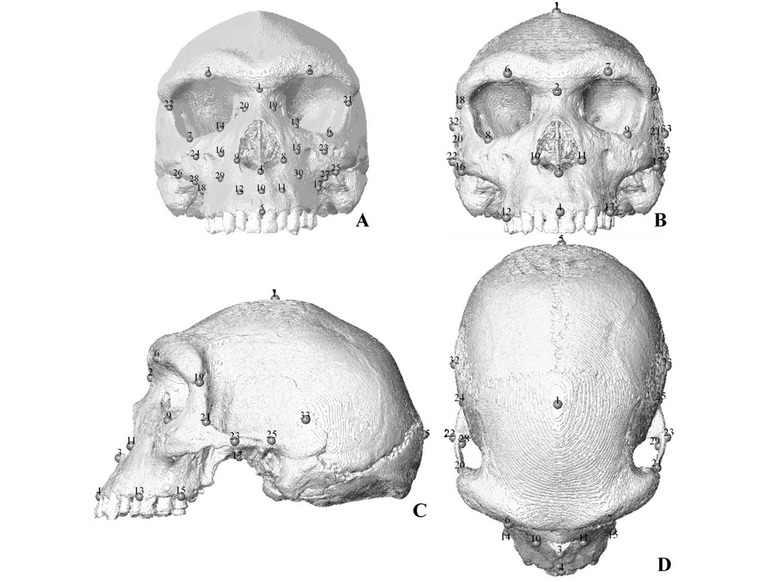Why Our Human Eyebrows Are The Best Brows Of All
The slightly modified image you see at the head of this article shows a skull designated Kabwe-1. This skull was discovered by Tom Zwiglaar in 1921, and is unique in several fairly obvious ways. This skull is one of the oldest known to have tooth cavities – they didn't have a lot of toothbrush knowledge back 300,000 years ago. The other distinctive feature on Kabwe-1 is its brow ridge.
A high-resolution CT scan was done on Kabwe-1 for research purposes. The image you see immediately below was obtained from the Smithsonian Institution, and is a full front-on view of Kabwe-1. Here you can see that fantastic ridge in all its glory.

Using the scan of Kabwe-1, researchers Paul O'Higgins, Penny Spikins, and Ricardo Miguel Godinho did some tests. The skull was assumed to have the physical qualities given to its 3D model (the CT scan turned 3D model). changing the size and shape of the brow ridge told O'Higgins, Spikins, and Godinho how important said ridge was to various other physical features in the skull.
They found out that shrinking the ridge didn't have any affect on the connection between the orbits of the eyes and the top of the skull. Changing size here really didn't change much at all. They also tested size changes on models of mechanical forces involved in Kabwe-1 eating food. No dice!
Instead, they listed all the different ways in which eyebrows affect our everyday modern human life. People groom their eyebrows to present themselves well. People react differently to a face with eyebrows VS one without.

With the brow ridges we modern humans have, we're able to present a wide array of emotional indicators. The smaller the ridge, the less nuance in emotion our eyebrows are able to show those around us.
This isn't necessarily the one and only reason why humanoids grew brow ridges – and eyebrows. But it's certainly important. "As browridge morphology in this fossil is not driven by spatial and mechanical requirements alone, the role of the supraorbital region in social communication is a potentially significant factor," said the research paper published this week. "We propose that conversion of the large browridges of our immediate ancestors to a more vertical frontal bone in modern humans allowed highly mobile eyebrows to display subtle affiliative emotions."
To learn more about the research at hand, have a peek at the paper "Supraorbital morphology and social dynamics in human evolution" as published this week in Nature Ecology & Evolution (2018). This paper was authored by Paul O'Higgins, Penny Spikins, and Ricardo Miguel Godinho, and can be found with DOI code doi:10.1038/s41559-018-0528-0.
